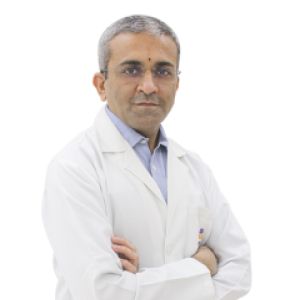Overview
Perthes disease (Legg Calve Perthes disease) is a childhood condition where the blood supply to the head of the thigh bone temporarily reduces, causing the bone to become weak and lose its normal shape. With timely diagnosis and specialised care, children can regain healthy hip function and continue their daily activities without long-term limitations.
At Sarvodaya Hospital, we offer advanced Perthes disease treatment through our expert team in paediatric (pediatric) orthopaedics. We assess the Perthes disease stages, guide families with clarity and provide personalised plans that help protect the hip joint as your child grows. Families across Faridabad and Delhi NCR trust us for reliable, child-focused orthopaedic care.
Why Timely Treatment for Perthes Disease is Required?
Early care is important because Perthes disease does not improve on its own.
It occurs when reduced blood flow weakens the femoral head, leading to pain, stiffness and limited hip movement. Parents may notice Perthes disease symptoms like limping, difficulty rotating the hip, thigh or knee pain and reduced activity levels. If not managed at the right time, the hip bone can become deformed, causing long-term mobility issues and early arthritis in adulthood.
Timely treatment helps protect the hip joint, supports proper bone healing and ensures your child maintains healthy movement as they grow.
Treatment Approach for Perthes Disease
We begin with a thorough clinical examination supported by X-rays and MRI scans to understand the Perthes disease stages and the extent of hip involvement.
You also receive a clear explanation of your child’s condition so the treatment plan feels easier to follow.
- Treatment focuses on protecting the femoral head while it heals. Younger children often benefit from rest, activity modification and physiotherapy to keep the hip flexible.
- When needed, we use braces or casts to maintain the correct hip position. These help the femoral head stay round as it regenerates.
- Older children or advanced cases may require surgical intervention to improve joint alignment. Our pediatric orthopedic doctors use precise, minimally invasive techniques whenever suitable to support faster recovery.
Throughout the process, we monitor healing regularly with follow-up imaging and assessments.
Benefits of Perthes Disease Treatment
Early and structured treatment helps protect the hip joint, reduce pain and support healthier bone regeneration. It also improves long-term mobility and lowers the risk of future joint problems as your child grows.
- Better Hip Function: Treatment helps maintain the round shape of the femoral head for smooth movement.
- Pain Relief: Guided care reduces discomfort, stiffness and limping.
- Improved Mobility: Physiotherapy and activity guidance help children return to normal activities safely.
- Lower Risk of Arthritis: Early care prevents long-term deformity and joint wear.
- Personalised Healing Plan: Each plan is tailored to your child’s age, stage of the disease and hip condition.
This ensures your child stays on track and maintains healthy hip movement as they grow.
Post-Treatment Lifestyle Modifications
Recovery after Perthes disease treatment requires consistent care to protect the healing hip and support healthy movement.
- Activity Control: Encourage gentle daily movements but avoid running, jumping or high-impact sports until advised.
- Physiotherapy Exercises: Regular stretching and strengthening routines help maintain hip flexibility.
- Healthy Weight Management: A balanced diet helps reduce excess pressure on the hip joint.
- Supportive Seating and Posture: Use chairs with good back support and avoid sitting cross-legged.
- Scheduled Follow-Ups: Attend all review visits so we can monitor bone healing and joint shape closely.
Why Choose Sarvodaya Hospital for Perthes Disease Treatment?
- Specialised Paediatric (Pediatric) Orthopaedic Expertise: Our team includes highly trained paediatric orthopaedic specialists experienced in managing all Perthes disease stages, ensuring accurate assessment and safe treatment.
- Comprehensive, Stage-Based Treatment Planning: We tailor every plan according to the child’s age, hip shape and disease progression, helping protect the femoral head throughout all phases of healing.
- Advanced Imaging and Diagnostic Facilities: With high-quality X-ray and MRI support, we track bone changes precisely and plan interventions with confidence.
- Integrated Physiotherapy and Rehabilitation Support: Our physiotherapists work closely with orthopaedic doctors to maintain hip mobility, guide exercises and support long-term joint health.
- Minimally Invasive Surgical Options: When surgery is needed, our pediatric orthopaedic doctors use precise, child-friendly techniques to improve alignment and reduce recovery time.
- Parent-Focused Guidance and Clarity: We explain every finding in simple, clear language so you understand how the hip is healing and what care is needed at home.
- Trusted Centre for Children’s Bone Health: Recognised as one of the Best Paediatric Orthopaedics Hospitals in Faridabad, we provide compassionate, evidence-based care rooted in Sarvodaya’s spirit of service.





